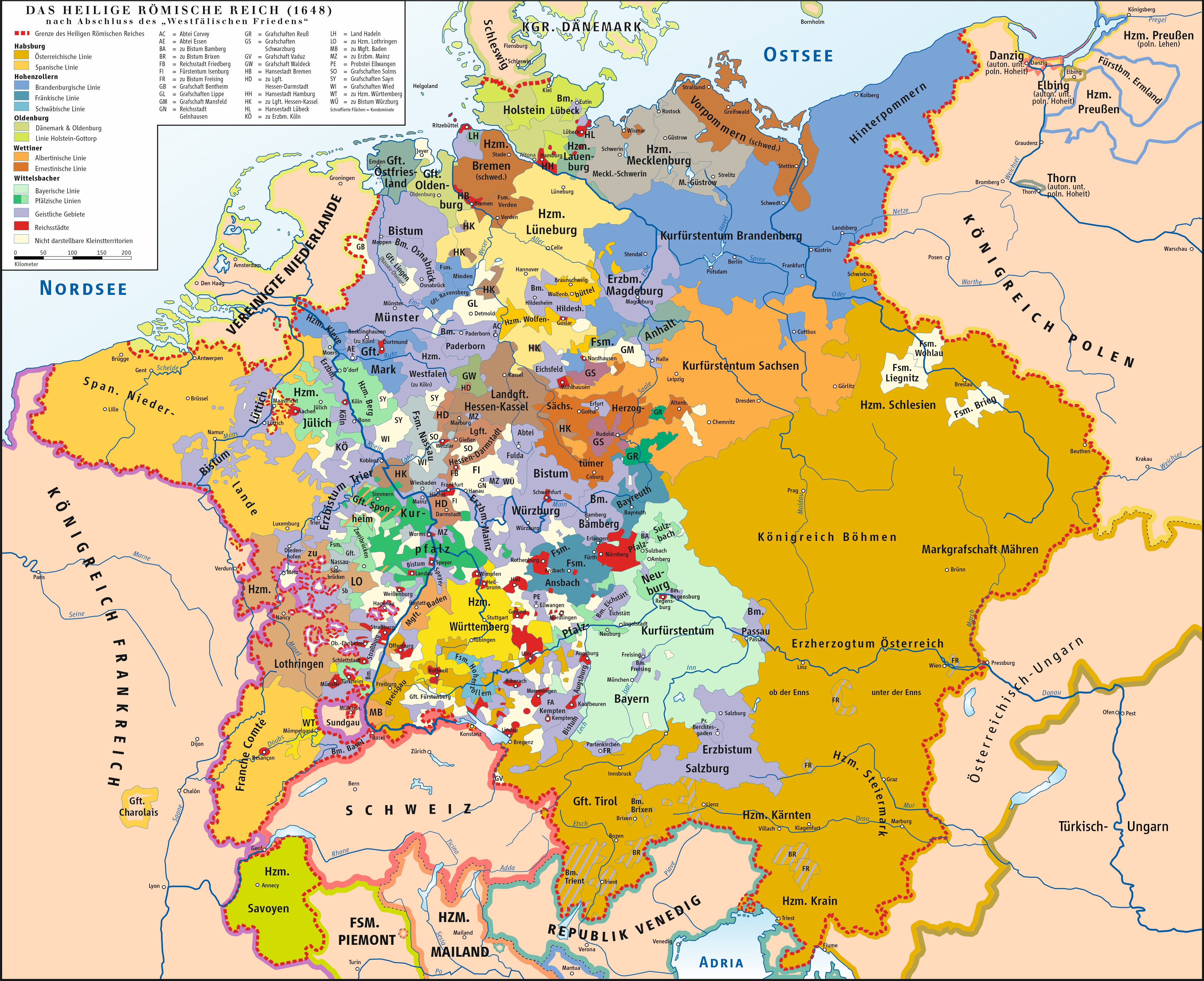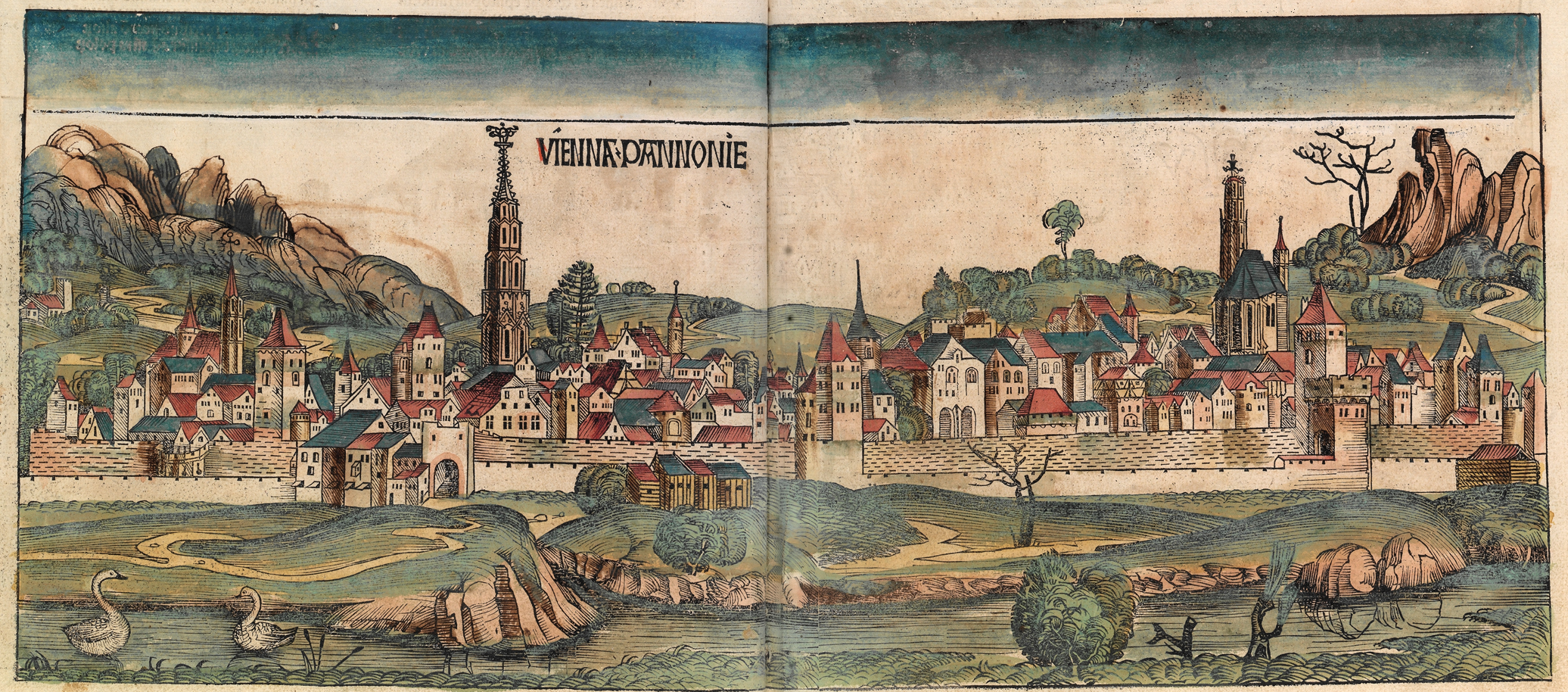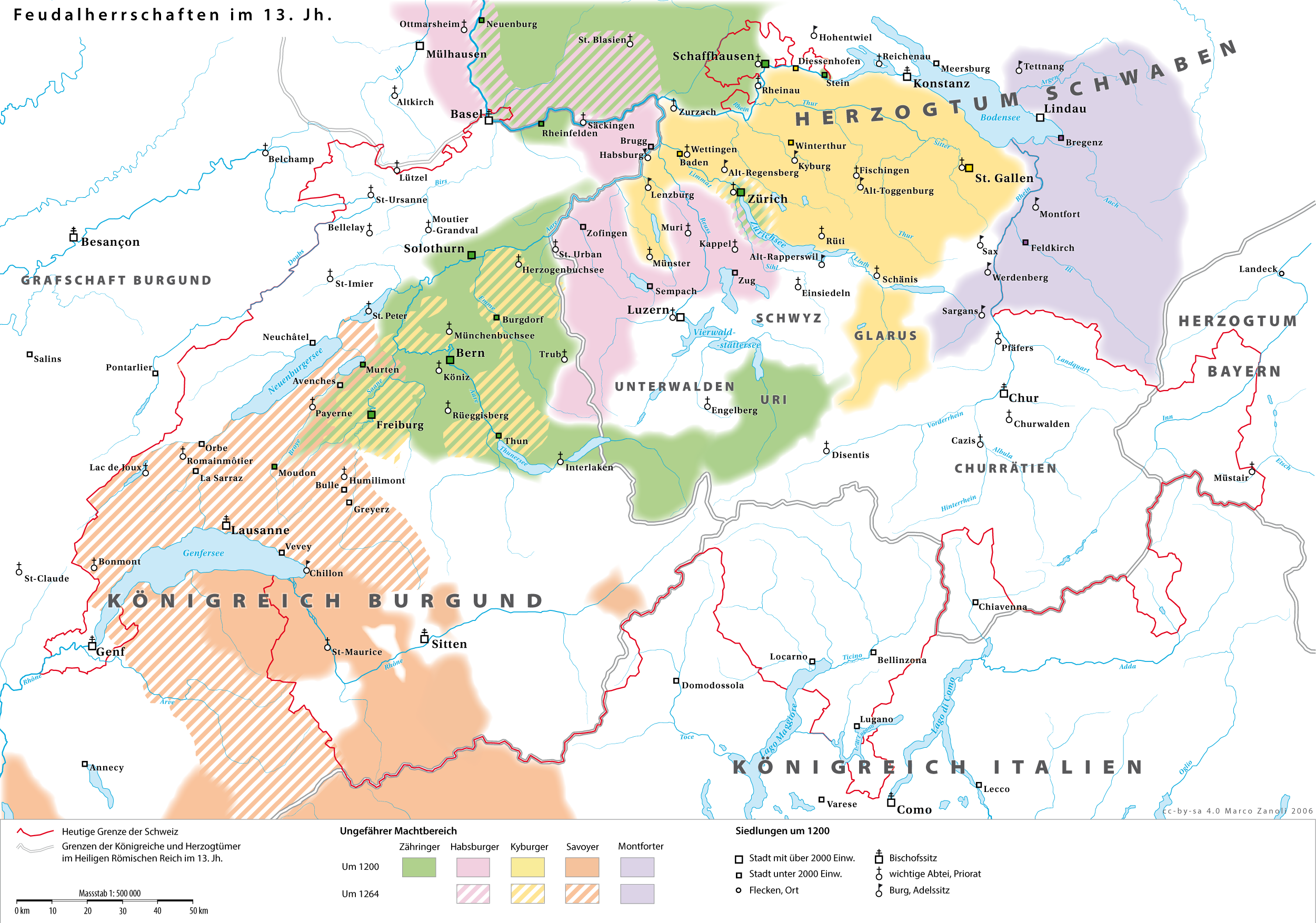|
Emperor Of Austria
The emperor of Austria (, ) was the ruler of the Austrian Empire and later the Austro-Hungarian Empire. The hereditary imperial title and office was proclaimed in 1804 by Francis II, Holy Roman Emperor, a member of the House of Habsburg-Lorraine, and continually held by him and his heirs until Charles I relinquished power in 1918. The emperors retained the title of Archduke of Austria. The wives of the emperors held the title empress, while other members of the family held the titles of archduke or archduchess. Predecessors Members of the House of Austria, the Habsburg dynasty, had been the elected Holy Roman Emperors since 1438 (except for a five-year break from 1740 to 1745) and mostly resided in Vienna. Thus the term "Austrian emperor" may occur in texts dealing with the time before 1804, when no Austrian Empire existed. In these cases the word Austria means the composite monarchy ruled by the dynasty, not the country. A special case was Maria Theresa; she bore the i ... [...More Info...] [...Related Items...] OR: [Wikipedia] [Google] [Baidu] |
House Of Habsburg-Lorraine
The House of Habsburg-Lorraine () originated from the marriage in 1736 of Francis I, Holy Roman Emperor, Francis III, Duke of Lorraine and Bar, and Maria Theresa of Habsburg monarchy, Austria, later successively List of Bohemian monarchs, Queen of Bohemia, Queen of Hungary, Queen of Germany, List of rulers of Croatia, Queen of Croatia and Archduchess of Austria, etc. etc. Its members form the legitimate surviving line of both the House of Habsburg and the House of Lorraine, and they inherited their patrimonial possessions from the matrilineality, female line of the House of Habsburg and from the patrilineality, male line of the House of Lorraine. The House of Lorraine's branch of Count of Vaudémont, Vaudémont and House of Guise, Guise became the main branch after a brief interlude in 1453–1473, when the duchy passed in right of Charles I, Duke of Bourbon, Charles de Bourbon's daughter to her husband, John II, Duke of Lorraine, John of Calabria, a Capetian dynasty, Capetian. L ... [...More Info...] [...Related Items...] OR: [Wikipedia] [Google] [Baidu] |
Kingdom Of Hungary (1526–1867)
The Kingdom of Hungary between 1526 and 1867 existed as a state outside the Holy Roman Empire, but part of the lands of the Habsburg monarchy that became the Austrian Empire in 1804. After the Battle of Mohács in 1526, the country was ruled by two crowned kings ( John I and Ferdinand I). Initially, the exact territory under Habsburg rule was disputed because both rulers claimed the whole kingdom. This unsettled period lasted until 1570 when John Sigismund Zápolya (John II) abdicated as King of Hungary in Emperor Maximilian II's favor. In the early stages, the lands that were ruled by the Habsburg Hungarian kings were regarded as both the "Kingdom of Hungary" and "Royal Hungary". Royal Hungary was the symbol of the continuity of formal law after the Ottoman occupation, because it could preserve its legal traditions, but in general, it was ''de facto'' a Habsburg province.Raphael PataThe Jews of Hungary: History, Culture, Psychology Wayne State University Press, 1996, p. 153 T ... [...More Info...] [...Related Items...] OR: [Wikipedia] [Google] [Baidu] |
Kingdom Of Bohemia
The Kingdom of Bohemia (), sometimes referenced in English literature as the Czech Kingdom, was a History of the Czech lands in the High Middle Ages, medieval and History of the Czech lands, early modern monarchy in Central Europe. It was the predecessor state of the modern Czech Republic. The Kingdom of Bohemia was an Imperial State in the Holy Roman Empire. The List of Bohemian monarchs, Bohemian king was a prince-elector of the empire. The kings of Bohemia, besides the region of Bohemia itself, also ruled other Lands of the Bohemian Crown, lands belonging to the Bohemian Crown, which at various times included Moravia, Silesia, Lusatia, and parts of Saxony, Brandenburg, and Bavaria. The kingdom was established by the Přemyslid dynasty in the 12th century by the Duchy of Bohemia, later ruled by the House of Luxembourg, the Jagiellonian dynasty, and from 1526 the House of Habsburg and its successor, the House of Habsburg-Lorraine. Numerous kings of Bohemia were also elected Hol ... [...More Info...] [...Related Items...] OR: [Wikipedia] [Google] [Baidu] |
Habsburg Monarchy
The Habsburg monarchy, also known as Habsburg Empire, or Habsburg Realm (), was the collection of empires, kingdoms, duchies, counties and other polities (composite monarchy) that were ruled by the House of Habsburg. From the 18th century it is also referred to as the Austrian monarchy, the Austrian Empire () or the Danubian monarchy. The history of the Habsburg monarchy can be traced back to the election of Rudolf I of Germany, Rudolf I as King of the Romans, King of Germany in 1273 and his acquisition of the Duchy of Austria for the Habsburgs in 1282. In 1482, Maximilian I, Holy Roman Emperor, Maximilian I acquired the Habsburg Netherlands, Netherlands through marriage. Both realms passed to his grandson and successor, Charles V, Holy Roman Emperor, Charles V, who also inherited the Monarchy of Spain, Spanish throne and Spanish Empire, its colonial possessions, and thus came to rule the Habsburg empire at its greatest territorial extent. The abdication of Charles V in 1556 led ... [...More Info...] [...Related Items...] OR: [Wikipedia] [Google] [Baidu] |
Francis I, Holy Roman Emperor
Francis I (Francis Stephen; ; ; ; 8 December 1708 – 18 August 1765) was Holy Roman Emperor from 1745 to 1765, List of rulers of Austria#Dukes and archdukes of Austria under the House of Habsburg, Archduke of Austria from 1740 to 1765, List of kings and dukes of Lorraine#House of Lorraine, Duke of Lorraine and Duchy of Bar, Bar from 1729 to 1737, and List of grand dukes of Tuscany#Habsburg-Lorraine grand dukes of Tuscany, 1737–1801, Grand Duke of Tuscany from 1737 to 1765. He became the ruler of the Holy Roman Empire, Habsburg monarchy, Austria, and Grand Duchy of Tuscany, Tuscany through his marriage to his second cousin Maria Theresa of Austria, daughter of Emperor Charles VI. Francis was the last non-Habsburg monarch of the Empire. The couple were the founders of the Habsburg-Lorraine dynasty, and their marriage produced sixteen children. Francis was the oldest surviving son of Leopold, Duke of Lorraine, and the French princess Élisabeth Charlotte d'Orléans. Duke Leopo ... [...More Info...] [...Related Items...] OR: [Wikipedia] [Google] [Baidu] |
Maria Theresa
Maria Theresa (Maria Theresia Walburga Amalia Christina; 13 May 1717 – 29 November 1780) was the ruler of the Habsburg monarchy from 1740 until her death in 1780, and the only woman to hold the position suo jure, in her own right. She was the sovereign of Archduchy of Austria, Austria, Kingdom of Hungary, Hungary, Kingdom of Croatia (Habsburg), Croatia, Crown of Bohemia, Bohemia, Principality of Transylvania (1711–1867), Transylvania, Slavonia, Duchy of Mantua, Mantua, Duchy of Milan, Milan, Moravia, Galicia and Lodomeria, Dalmatia, Austrian Netherlands, Carinthia, Carniola, Gorizia and Gradisca, Austrian Silesia, Tyrol (state), Tyrol, Styria and Duchy of Parma, Parma. By marriage, she was List of Lorrainian royal consorts#House of Vaudemont, 1473–1737, Duchess of Lorraine, List of Tuscan consorts#House of Lorraine, 1737–1765, Grand Duchess of Tuscany, and List of Holy Roman empresses#House of Lorraine, Holy Roman Empress. Through her aunt, Charlotte Christine of Brunswi ... [...More Info...] [...Related Items...] OR: [Wikipedia] [Google] [Baidu] |
Composite Monarchy
A composite monarchy (or composite state) is a historical category, introduced by H. G. Koenigsberger in 1975 and popularised by Sir John H. Elliott, that describes early modern states consisting of several countries under one ruler, sometimes designated as a personal union, who governs his territories as if they were separate kingdoms, in accordance with local traditions and legal structures. The composite state became the most common type of state in the late medieval and early modern era in Europe. Koenigsberger divides composite states into two classes: those, like the Spanish Empire, that consisted of countries separated by either other states or by the sea, and those, like Poland–Lithuania, that were contiguous. A medieval example of a composite monarchy was the Angevin Empire. Theorists of the 16th century believed that "conformity" (similarity in language and customs) was important to success of a composite state. Francesco Guicciardini praised the acquisition o ... [...More Info...] [...Related Items...] OR: [Wikipedia] [Google] [Baidu] |
Vienna
Vienna ( ; ; ) is the capital city, capital, List of largest cities in Austria, most populous city, and one of Federal states of Austria, nine federal states of Austria. It is Austria's primate city, with just over two million inhabitants. Its larger metropolitan area has a population of nearly 2.9 million, representing nearly one-third of the country's population. Vienna is the Culture of Austria, cultural, Economy of Austria, economic, and Politics of Austria, political center of the country, the List of cities in the European Union by population within city limits, fifth-largest city by population in the European Union, and the most-populous of the List of cities and towns on the river Danube, cities on the river Danube. The city lies on the eastern edge of the Vienna Woods (''Wienerwald''), the northeasternmost foothills of the Alps, that separate Vienna from the more western parts of Austria, at the transition to the Pannonian Basin. It sits on the Danube, and is ... [...More Info...] [...Related Items...] OR: [Wikipedia] [Google] [Baidu] |
Holy Roman Emperor
The Holy Roman Emperor, originally and officially the Emperor of the Romans (other), Emperor of the Romans (; ) during the Middle Ages, and also known as the Roman-German Emperor since the early modern period (; ), was the ruler and head of state of the Holy Roman Empire. The title was held in conjunction with the title of King of Italy#Kingdom of Italy (781–962), King of Italy (''Rex Italiae'') from the 8th to the 16th century, and, almost without interruption, with the title of King of Germany (''Rex Teutonicorum'', ) throughout the 12th to 18th centuries. The Holy Roman Emperor title provided the highest prestige among Christianity in the Middle Ages, medieval Catholic monarchs, because the empire was considered by the Catholic Church to be Translatio imperii, the only successor of the Roman Empire during the Middle Ages and the early modern period. Thus, in theory and diplomacy, the emperors were considered first among equalsamong other Catholic monarchs across E ... [...More Info...] [...Related Items...] OR: [Wikipedia] [Google] [Baidu] |
Imperial Election
The election of a Holy Roman Emperor was generally a two-stage process whereby the King of the Romans was elected by a small body of the greatest princes of the realm, the prince-electors. This was then followed shortly thereafter by his coronation as king, originally at Aachen and later at Frankfurt. The king was then expected to march to Rome, to be Coronation of the Holy Roman Emperor, crowned Emperor by the pope. In 1356, the Emperor Charles IV, Holy Roman Emperor, Charles IV promulgated the Golden Bull of 1356, Golden Bull, which became the fundamental law by which all future kings and emperors were elected. After 1508, rulers usually were recognized as "Emperor elect" after their first, royal coronation. Background The ''Königswahl'' was the election of royal candidates in the Holy Roman Empire and its predecessors as king by a specified elective body. Whilst the succession to the throne of the monarch in some cultures is governed by the rules of hereditary succession, th ... [...More Info...] [...Related Items...] OR: [Wikipedia] [Google] [Baidu] |
House Of Habsburg
The House of Habsburg (; ), also known as the House of Austria, was one of the most powerful Dynasty, dynasties in the history of Europe and Western civilization. They were best known for their inbreeding and for ruling vast realms throughout Europe during the Middle Ages and early modern period, including the Holy Roman Empire and Habsburg Spain, Spain. The house takes its name from Habsburg Castle, a fortress built in the 1020s in present-day Switzerland by Radbot of Klettgau, who named his fortress Habsburg. His grandson Otto II, Count of Habsburg, Otto II was the first to take the fortress name as his own, adding "Count of Habsburg" to his title. In 1273, Count Radbot's seventh-generation descendant, Rudolph I of Germany, Rudolph, was elected King of the Romans. Taking advantage of the extinction of the Babenbergs and of his victory over Ottokar II of Bohemia at the Battle on the Marchfeld in 1278, he appointed his sons as Dukes of Austria and moved the family's power base ... [...More Info...] [...Related Items...] OR: [Wikipedia] [Google] [Baidu] |







